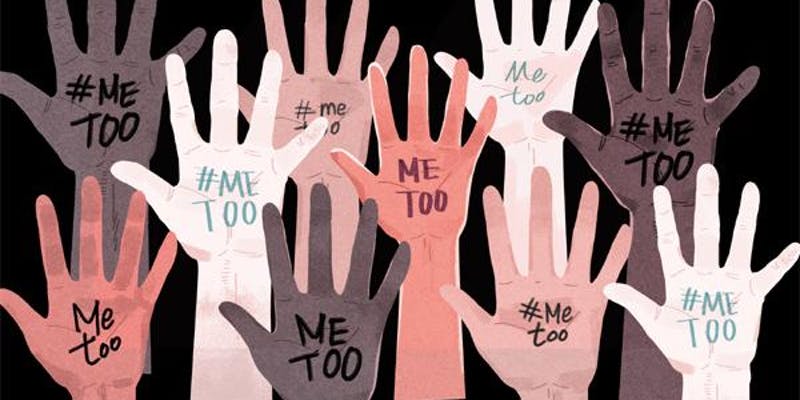
Theatrical intimacy is a key issue, not only after the #metoo movement uprise but also in regards to safeguarding with young people. Founded in 2006, the Me Too movement saw people of both sexes from various backgrounds discussing the issue of sexual violence and abuse. The movement has sparked a global re-emergence of rape culture which Bianca Fileborn and Rachel Loney-Howes (2019) describe has
- reaffirmed publicly just how widespread sexual assault and harassment actually are. (Fileborn, Loney-Howes. 2019:2)
The movement has brought to light how sexual misconduct is taking place in the theatre industry. From rehearsal halls to big Hollywood names, it is clear that as practitioners and people, we must question our own complicity and take accountability for ourselves as professionals moving forward to protect our integrity as artists.
The Pillars of Intimacy were created by Siobhan Richardson of Intimacy Directors International and her co-directors Tonia Sinia and Alicia Rodi. The Pillars create safe structures to explore material for actors and directors alike. My understanding of the Pillars are as follows:
#1 CONTEXT
The context of the scene. We must understand what story is trying to be told but give actors the ownership to explore this in a way in which feels comfortable. Richardson uses the example of sensual touch.
- for one person that’s a stroke on the chin. But maybe you’re insecure about your chin. So it could be a stroke along the jawline. We tell the story without asking someone to feel violated. (Richardson. ND)
#2 COMMUNICATION
Communication is a part that everyone is responsible for. From actors to stage hands, Richardson suggests that there should be ongoing conversations between members as well as regular check-ins. This ensures that the performers feel comfortable and therefore safe at all times. Communication also establishes clear boundaries.
- this is our foundation of safety. (Richardson. ND)
#3 CONSENT
The pillar of consent considers all performers. The person receiving the action may give consent, yet the person conducting the action may feel uncomfortable. It is important to note the context of the consent. Because consent is given in a scene, it does not mean that it is applicable in another scene or, worse, outside of the rehearsal space.
#4 CHOREOGRAPHY
Choreography is intended to create safe, repeatable actions that support the storytelling of a scene. Once consent has been given, it is important for performers to not get carried away and deviate from the choreography given. The choreography as it has been set is what has been agreed and that is how it should stay.
#5 CLOSURE
Closure is the final measure of safety. Richardson suggests that in order to distinguish the worlds of ‘personal’ and ‘professional’, rehearsals should end with a closing moment or ritual which establishes that the intimate contact has ended.
As a teacher, it is particularly important to understand how to manage the intimacy between myself and young people. Examples of situations where I would need to physically engage with learners could vary from needing to demonstrate contact, improvisation work, or lifts. The actively direct and engaged nature of teaching drama means that there is a need to move away from a traditional, didactic style of teaching and toward a more holistic approach. Anthony Laker also considers how teacher training must broaden which, he states, will require a
- cultural shift that enables ‘performance pedagogy’ to include ‘humanistic pedagogy’ thus becoming a complete, cohesive eclectic pedagogy. (Laker, 2002:114)
It is also important to know how to manage intimacy between the young people. Everyone’s physical boundaries differ depending on experience. For example, some young women feel uncomfortable or rude saying ‘no’. Equally, some may have experienced abuse and may be very uncomfortable with touch. When considering theatrical intimacy and pedagogy, I believe it is essential for teachers to take care of the entire child. By this, I mean focusing on their emotional wellbeing as well as their studies. Chris Drew, PhD (2020) explains that a humanist educator’s teaching strategy has four philosophical pillars:
- Free Will: We have free choice to do and think what we want;
- Emotions impact Learning: We need to be in a positive emotional state to achieve our best;
- Intrinsic Motivation: We generally have an internal desire to become our best selves;
- Innate Goodness: Humans are good at the core.
(Drew, 2020)
Maintaining these pillars acknowledges and appreciates students’ individual needs in order to help learners bring out the best in themselves. If my studies of Drama and Theatre have taught me one thing, it is that so much of us is driven by our emotions. A humanistic approach to teaching recognises that. It is my responsibility as an educator to create a positive and comfortable space where students can flourish.
My accountability and responsibility will be constantly monitored as a teacher in training. Ensuring personal and professional conduct and managing behaviour effectively to ensure a good and safe learning environment are just two of the many criteria of the Government Teachers’ Standards that I will continually be assessed against throughout my training and teaching career. An overview of the Teachers’ Standards can be found at:
Furthermore, I intend to continue to be engaged with current affairs, intimacy and safety, and appropriate conduct in the workplace.
Bibliography
- Drew, C. (2020) What is the Humanistic Theory in Education? [Internet]. Available at https://www.helpfulprofessor.com/humanist-theory-in-education/ [Accessed 20th March 2020]
- Fileborn, B. Loney-Howes, R. (2019) #MeToo and the Politics of Social Change. Springer Nature.
- Laker, A. (2002) Beyond the Boundaries of Physical Education: Educating Young People for Citizenship and Social Responsibility. Routledge.
- Morey, E. (No Date) The 5 Cs of Intimacy: In Conversation with Siobhan Richardson. [Internet]. Available at https://www.theatreartlife.com/one-and-done/5-cs-itimacy-conversation-siobhan-richardson/ [Accessed 2nd April 2020]
Image Cited from:
- University of Leeds. (2018) Call for Papers: Postgraduate conference and workshop: After #metoo: where next? [Internet]. Available at https://flag.leeds.ac.uk/news/postgraduate-conference-and-workshop-after-metoo-where-next/ [Accessed 6th April 2020]
